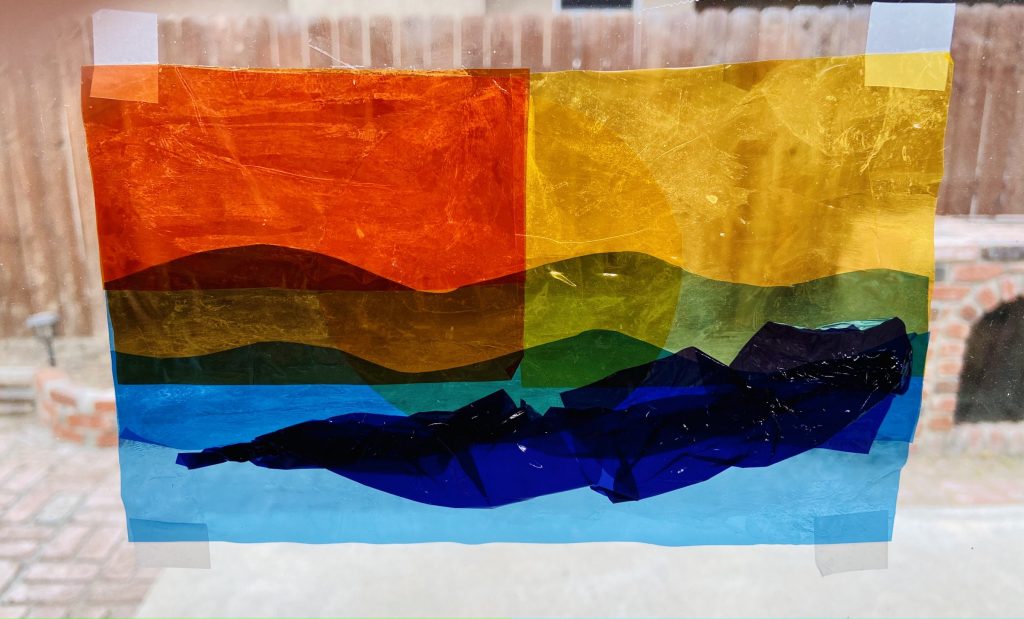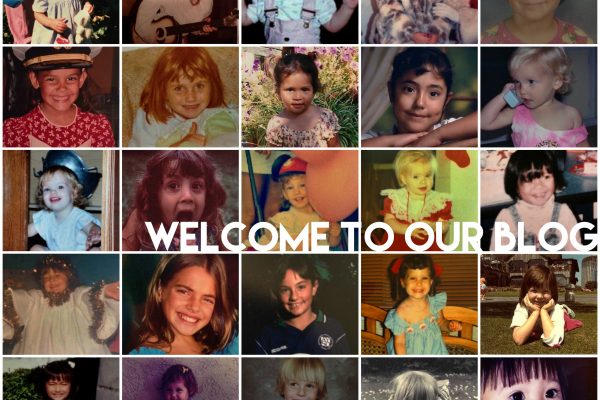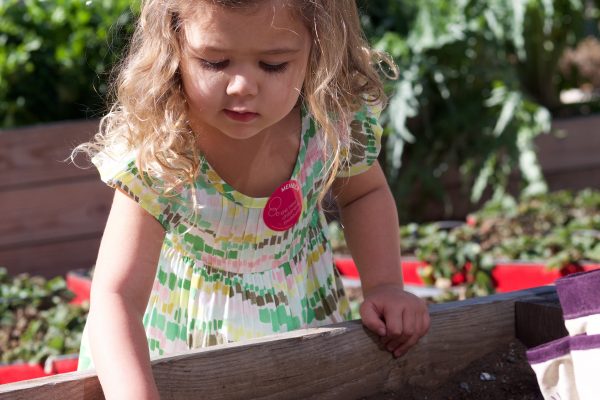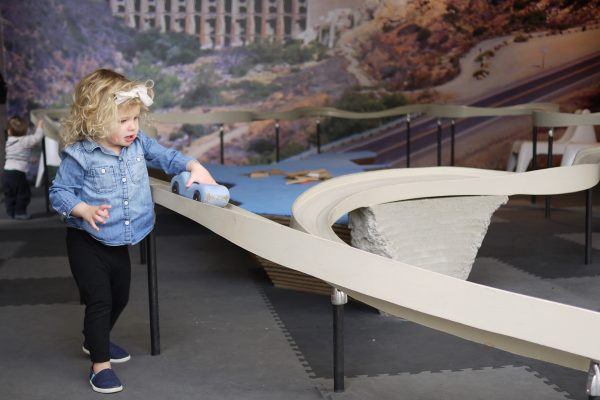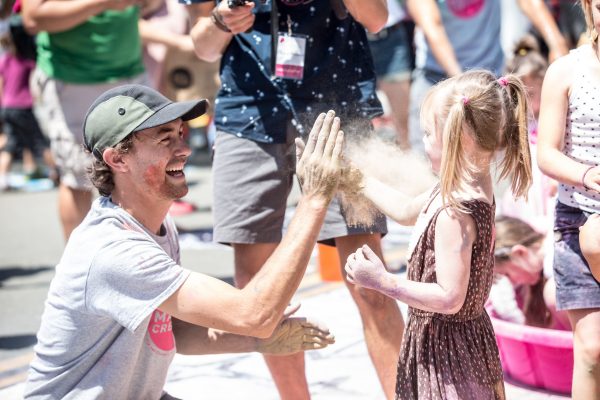do it yourself: color + light catcher
Create a mini window mural exploring color and light inspired by Energized by Regan Russell now on view at the Museum. Enjoy the surprises that come from overlapping shapes and colors using cellophane sheets. Glue everything down to make a unique window work and observe how it changes throughout the day!
Color + Light Catcher Tutorial
AGE: 4+ (with adult support)
TIME FRAME: 45 min (includes drying time)
SUPPLIES:
- 4 different colored cellophane sheets
- 1 sheet of clear acetate
- 1 Ziploc sandwich bag
- 1 sheet of white paper
- scissors, glue stick + clear tape
directions
1. Explore big shapes and layering colors. Begin by cutting a few large shapes from the cellophane sheets. How can you make the shapes distinct from each other? Can you make some with straight edges and others with curves? After cutting large shapes, play with creating a composition with them on top of the clear plastic (acetate) sheet. Play with overlapping and placing them in different directions. Also, explore what happens when you put one color on top of another color. What new colors are made? When ready, glue down large shapes on top of the acetate sheet. For any cutting that you’ve done, save your scraps and place them in your Ziploc sandwich bag. You’ll be using your scraps in the next step!
2. Add small shapes and relief. Take your scrap papers from the Ziploc sandwich bag and use scissors to cut them into smaller shapes. You can also play with the cellophane and create raised areas (relief) within your design by crumpling up the cellophane sheet and gluing it down. Play with adding smaller shapes and relief to your design, and, when ready, glue everything down. Be sure to use lots of glue and take time to re-glue any areas that might be popping up.
3. Display and watch it change. Once you’ve glued down all of the cellophane pieces to your background, allow it to dry completely (20 minutes or so). Peel the cellophane design off of the acetate sheet when dry. Hang it up on a window using a few small pieces of clear tape. Keep your work hung in the same spot throughout the day and visit it a few times. Notice how the sun changes the position of the colors being reflected from your design and play with catching its shifting reflection using a white piece of paper!
Additional Learning Activities (Grades K-5)
Share Your Design
You’ve finished your Color + Light Catcher! Share your finished design with your family or friends. What surprised you while making it? Do you have a favorite shape or color that came from it? Think and share about your discoveries and challenges. If you have more cellophane available, why not try a new design!
Water Rainbows
If you were excited by the play of light and color from your Color + Light Catcher, try a similar idea using water and food coloring. Fill several clear jars, cups or containers with water and food coloring (one color each from the rainbow) and place all containers (in a line) on a well-lit window ledge or outside area. Notice how your water rainbow changes throughout the day and use white paper again to catch its rainbow reflection!
Select a Story
Reading is a wonderful way to learn more about an idea. Choose books that you like about color and light or that feature colorful illustrations and read them to yourself or together with a grownup or friend before and/or after the Color + Light Catcher activity!
Recommended Related Readings (Ages 4 – 10):
- Mixed: A Colorful Story by Arree Chung
- Light Makes a Rainbow by Sharon Coan
- Light: Shadows, Mirrors, and Rainbows by Natalie Mayra Rosinsky and illustrated by Sheree Boyd
CA Arts Standards for Visual Art (Grades K – 5)
- Engage in exploration and imaginative play with various arts materials.
- Explore uses of materials and tools to create works of art or design.
- Use observation and investigation in preparation for making a work of art.
- Discuss and reflect with peers about choices made in creating artwork.
- Create personally satisfying artwork using a variety of artistic processes and materials.
- Brainstorm individual and collaborative approaches to a creative art or design problem.
- Identify, describe and visually document places and/or objects of personal significance.
CA Science Content Standards (Grades K – 3)
- Physical Sciences; Properties of materials can be observed, measured and predicted.
- Physical Sciences; Students know light is reflected from mirrors and other surfaces.
- Earth Sciences; Students know the position of the Sun in the sky changes during the course of the day and from season to season.
